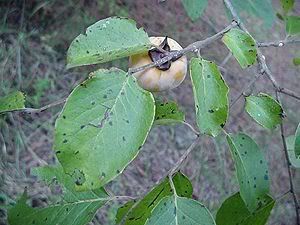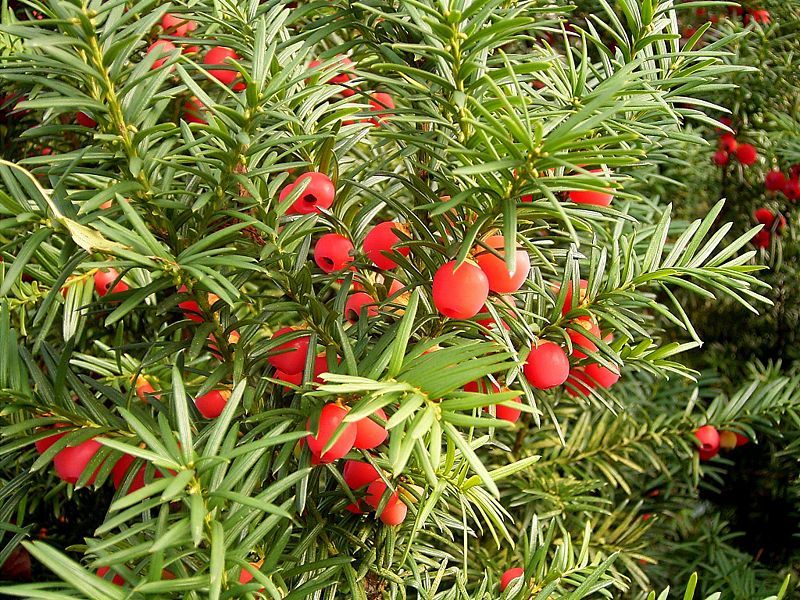Well seeing as yesterday I took a plant straight from the ground and transplanted it (unfortunately it doesn't look so well today) I decided that today I would not only plant the plants I had, but take the empty planters I have accumulated and go and explore the nearby wooded area.
I first started my day by deciding to plant the hostas and poinsettias that I had on our deck into our yard. The central one is hard to see but is the one with beautiful mixed foliage colors. I decided since I only had one, I would make it the center of attention. Next to it, I planted the matching maroon hostas on either side of it. Deciding the poinsettias weren't going anywhere being in their little planters, I would round out the little pattern I was making by placing them on either side. I am hoping that in nice open soil they will possibly grow larger but if they don't it's fine.

After planting the hostas and poinsettias, I decided to go for a walk through the woods to find some native plants for our landscaping. I went for a walk through the woods and transplanted some Virginia creeper, Parthenocissus quinquefolia, from the ground into a small planter. It is a native vine/ivy like plant. You can identify it by the star or palm shaped look of the leaves. It is what is called palmately compound. Compound meaning that there are multiple leaflets per stem and palmate describing the way the leaflets are arranged on stem. Virginia creeper is a great strong native plant that is great for trellises, ground covers, green walls, climbing vine, essentially a great plant for a huge variety of uses. It is also a great landscape plant year-round. It provides pretty white flowers in the spring and summer. It provides pretty blue berries in the summer and fall. It provides amazing fall leaf color in the fall and the branchlets are a vibrant red color on the new growth, making it quite pretty in the winter. It is also good for a variety of conditions. The plant that I found was in practically full shade and it was competing well with other vines. It can grow well in nearly every type of soil and is resistant to strong winds. It's pollution and urban tolerant. It is hardy zone 3-9. Possibly the only drawback is it is difficult to get rid of once established. If there were one native plant that I would be sure would be invasive in other countries, it would be this plant.

As I continued exploring through the woods, I discovered this next plant. I walked along and nearly gasped at the horrible condition it was growing in. Vines were climbing over it, weeds were all around it. It was in basically full shade with one small entrance to the west where it was possibly getting some evening sun. Having only a small digging trough with me, I set to work digging up this tiny tree, trying my best to not cut too many roots. This small scraggly tree that I dug up is Eastern redcedar, Juniperus virginiana. Now instantly by the Latin name you are likely confused. This plant is not a true cedar but in fact a juniper tree. By the genus name virginiana, it is also obvious that this is a native plant to the east coast, as well as the common name "eastern redcedar." This tree is medium growing and will grow to be about 50' by 20'. It does well in poor soils as well. It will grow in gravelly areas and is very pH adaptable, being able to adapt to both extremely acidic and alkalkine soils. It is a lovely east coast native that adds some nice evergreen coloring to your personal garden. One word of advice if you are going to either buy one or pick it from the forest like I did. It has a very strong taproot and very sharp spiny needles, making planting it very painful and difficult.

Seeing as I got plants from the forest, and deciding that the Juniper needed to go in the ground asap, I planted the other plants which I had in planters, wanting to get them out of the potters and into the ground and established. Here is the Little Henry sweetspire in the part of our yard that typically gets wet and swampy. This plant loves moist even swampy soils so I figured it would be good for this back area. There is also poison ivy on the tree behind it, so any plant to buffer off poison ivy is good for when daycare kids are in the hard. It also adds a nice pretty look to the area.
Seeing as I was taking pictures of the plants I had, I remembered that I said I would take a picture of the bean plants I had put in yesterday. Here they are. They are somewhat hard to see, as most have very thin "trunks" but they had just got a nice summer rain just a few minutes before and I am hoping they will do well and take off.
































